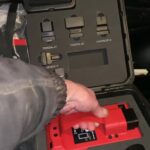Testing the distance capabilities of your Autel Evo drone is crucial for understanding its range and ensuring safe and successful flights. Various factors, including terrain, obstacles, and signal interference, can impact the drone’s range. A simple yet effective method for conducting an Autel Evo Distance Test involves utilizing natural obstacles like hills.
Testing Autel Evo Range with Hills
By flying your drone over a hill and gradually increasing the distance while observing the transmission signal, you can accurately gauge its range. Choose a specific landmark behind the hill, such as a distinctive rock or tree, as a reference point. Fly the drone beyond the hill, gradually lowering it over the landmark until the transmission signal begins to deteriorate. Record the elevation levels at the point where the signal weakens. Repeating this test with different antenna setups, such as comparing the stock antenna with a boosted amplifier setup, allows you to determine which configuration provides the best range. The improved signal strength offered by a boosted setup often results in better performance in challenging environments.
Autel Evo drones, particularly the Evo II Pro with its boosted amplifier, are known for their strong transmission signals. This powerful signal allows for low-altitude flights behind obstacles, expanding exploration possibilities. Even with the excellent stock antenna, a booster setup can significantly enhance range in areas with difficult terrain.
This hill-based testing method is also effective for comparing different non-boosted antenna configurations. By documenting the range achieved with each setup, you can identify the optimal antenna for your specific needs. This practical approach allows for a direct comparison of different configurations, ensuring you maximize the flight capabilities of your Autel Evo.
Real-World Applications: Archaeological Exploration and Wildlife Photography
The extended range capabilities of the Autel Evo open up exciting opportunities for various applications. Archaeological exploration, for instance, benefits greatly from the ability to fly over diverse terrains and capture detailed imagery of historical sites. Documenting ancient settlements and uncovering hidden artifacts becomes more accessible with a drone that offers a reliable and extended range.
Wildlife photography also significantly benefits from increased drone range. Observing and capturing images of animals in their natural habitat without disturbing them requires a drone capable of maintaining a safe distance while providing clear visuals. The Autel Evo’s impressive range and image quality make it a valuable tool for wildlife photographers.
Conducting a thorough Autel Evo distance test allows users to understand the drone’s range limitations and optimize its performance for specific tasks. Whether it’s exploring historical sites or capturing stunning wildlife photography, maximizing the drone’s range enhances its capabilities and expands its potential applications.

